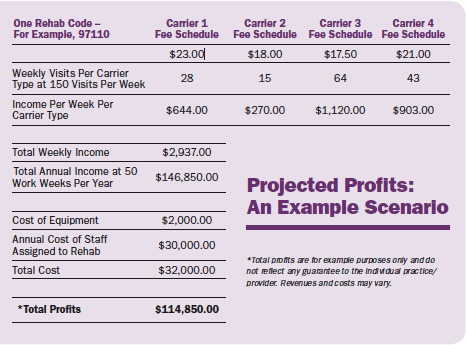In today's age of an ever-growing body of knowledge on the treatment of neuromusculoskeletal conditions, as well as health care reform and pay-for-performance, our profession continues to evolve for the better.
After seeing and hearing all of your chiropractic friends adding tools to their clinical tool box, you say to yourself, "It's time to implement a rehab program into my practice." The next thing you say to yourself is, "Where do I begin?" Well, here is your roadmap; a tried and true way to add needed services to your practice so your patients can reap the clinical benefits and you can reap the professional rewards. If you work consistently towards your goal, in 30 days you'll have a revitalized practice.

Step 1: Overview
Sit down, preferably with your staff to improve "buy-in," and discuss what you want your new practice to look and feel like in 30 days. Why should you implement a rehab program into your office? What goals do you have specifically for this program and how will you and your team carry them out? What are the benefits to the patients, the practice and the staff? What are the potential challenges? How will you and your team overcome those challenges? What are the new job roles for you and your staff? What process and schedule changes will you need to make, if any? How will you market these new services to referral sources and patients? The question of your space requirements needs to be addressed as well. Once you have answered these basic questions, proceed to Step 2.
Step 2: Compliance
When implementing a rehab program into your practice, it's critical to understand all the safety, state board of examiners/licensure/scope of practice, and coding and documentation requirements that are needed. This is where many doctors fail. The right thing to do is to go to your state board of examiners and industry experts to ask the necessary questions. Make a small investment in time and money and get the right answers the first time. Many doctors consult with practice-management companies that tell them how to grow their practices. Just make sure that all the hard work you do to grow your practice doesn't go to paying your future legal bills because you took too many shortcuts and got into trouble. Compliance is the cornerstone to a great practice no matter what type you have.




